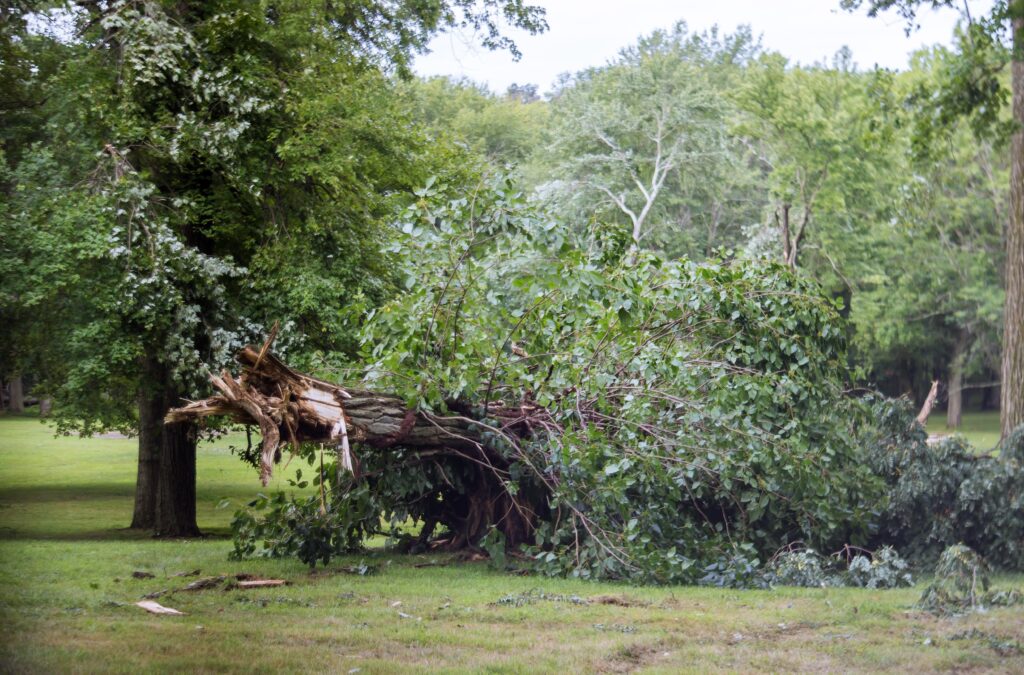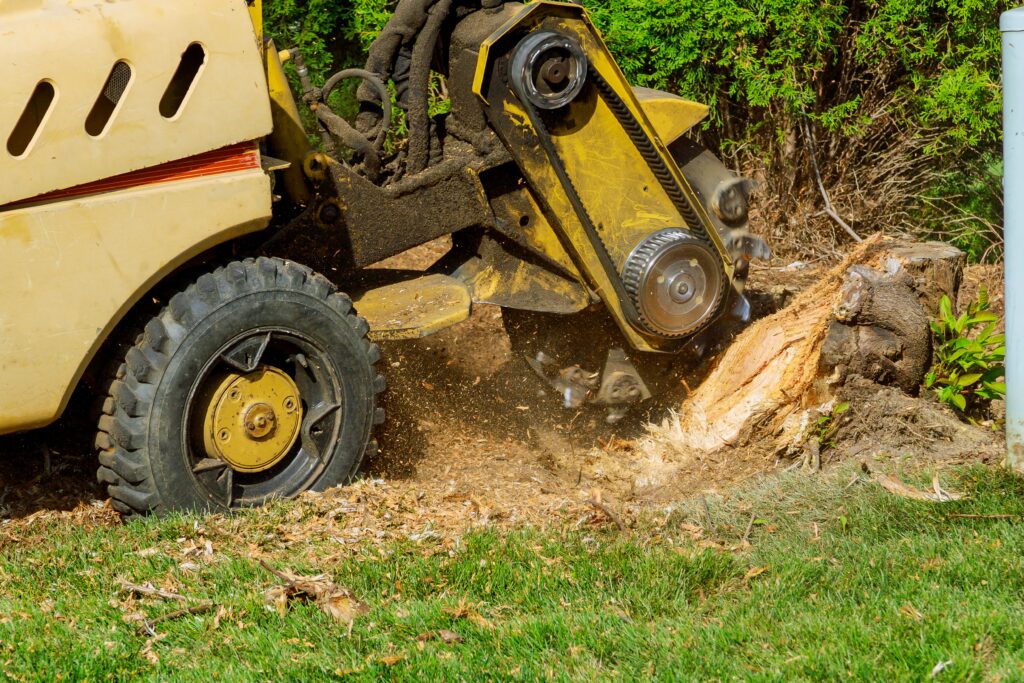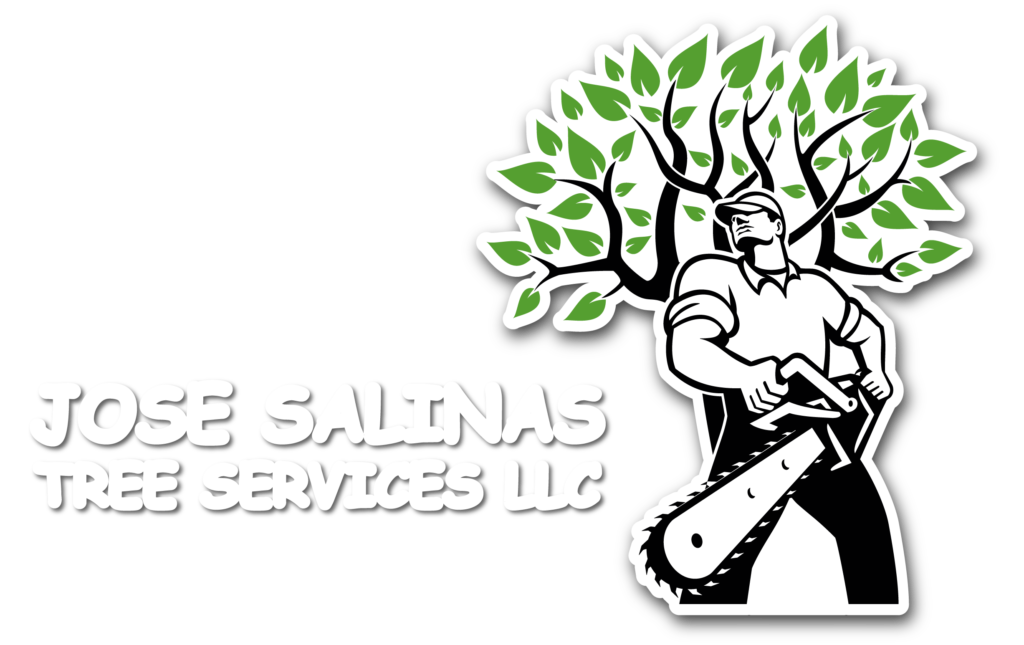1. Assessing the Damage Safely
After a storm, the first step is to assess the damage—but safety should always come first. If there are downed trees or branches near power lines, stay clear and call your local utility company immediately. Downed lines can pose serious risks of electrocution, so never attempt to handle the situation yourself.
For non-electrical hazards, inspect the area from a safe distance, taking note of any large branches that are still hanging, leaning, or precariously positioned. These branches could fall unexpectedly, posing a danger to anyone nearby. Do not attempt to remove or trim these branches on your own.
2. Check for Visible Tree Damage
Once it is safe to approach the trees, start by checking for obvious signs of damage. Look for:
Broken or hanging branches: These can be hazardous, especially if they’re near power lines or walkways.
Cracked trunks or large splits: Deep cracks or large splits in the trunk often mean the tree is unstable and could collapse.
Uprooted trees: Trees that have been pulled out of the ground should be handled with care, as their root system may be severely damaged.
If you notice any of these signs, it’s crucial to contact a professional tree care service immediately.
3. Remove Debris Safely
If the storm has left behind smaller branches and debris, it’s a good idea to start clearing the area to prevent accidents. However, be mindful of sharp objects or nails that may have been embedded into the ground from fallen branches or other materials. If the cleanup feels overwhelming or dangerous, it’s best to wait for professionals to assist with larger debris.
4. When to Call a Professional Tree Service
Storm damage often requires professional expertise to ensure safety and proper care. Here are some signs that it’s time to call in the experts:
Large, damaged trees: When dealing with large trees that have suffered severe damage, such as cracked trunks or broken limbs, it’s best to contact a tree service. These trees can be dangerous to remove or prune without the proper equipment.
Emergency tree removal: If trees are blocking roads, walkways, or threatening your home, professionals can quickly remove the hazard to restore safety to your property.
Tree stabilization: Sometimes trees are left leaning or unstable after a storm. A professional arborist can assess the damage and determine if the tree can be saved or if it needs to be removed.
5. Prevent Further Damage with Emergency Storm Cleanup
Once the immediate dangers have been removed, an emergency storm cleanup service can help with larger debris removal. Tree trimming, stump grinding, and even land clearing may be necessary to restore your landscape to its pre-storm condition. An expert tree care service like Jose Salinas Tree Services has the equipment and experience to handle all types of storm debris quickly and safely, ensuring that your property is cleaned up as soon as possible.
6. Protect Your Trees for the Future
While storm damage cannot always be prevented, proper tree care can help minimize the risk. After the storm has passed, it’s important to:
Trim overgrown or weak branches regularly to reduce the chances of storm damage in the future.
Strengthen trees with proper care, including ensuring they have adequate water, nutrients, and support.
Consider tree health assessments from a certified arborist, especially if your trees are older or have been weakened by prior storms.
Conclusion: Act Fast, Stay Safe, and Call the Professionals
When storms strike, the safety of your property and loved ones is the top priority. If you’re dealing with tree damage, it’s essential to assess the situation carefully and call in professionals like Jose Salinas Tree Services for expert storm damage cleanup and tree care. Our team is available 24/7 to help you restore your landscape, remove hazards, and protect the health of your trees.



